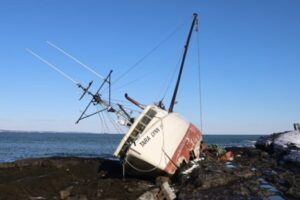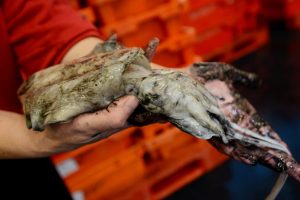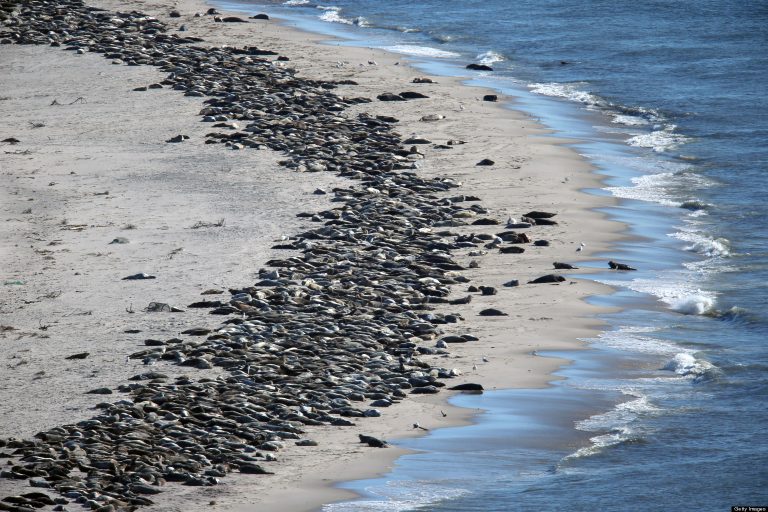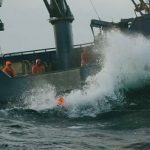Tag Archives: cod stocks

Non-Fishing Mortality Remains Key Concern in South Coast Cod Update
Today’s 3Ps cod stock assessment update delivered some good news for harvesters on the province’s south coast, but significant concerns regarding natural mortality and the untold impact of seal predation remain. “Fish harvesters on the south coast are looking for better science on this cod stock,” says FFAW-Unifor President Keith Sullivan. “Natural mortality has been driving the stock for many years. We already know that seals are eating a large amount of cod, but DFO needs their scientists to prove it first. Yet several years into this and we’ve made very little headway,” >click to read< 16:39
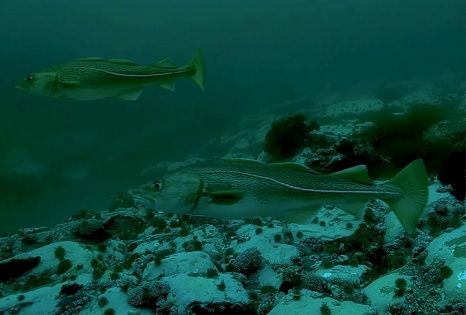
Southern Newfoundland cod stocks expected to be in ‘critical zone’ until early 2024
In a presentation of the assessment’s findings on Friday, stock assessment biologist Karen Dwyer said cod born in 2011 have been supporting the 3PS stock, between southern Newfoundland and St-Pierre-Miquelon, and the fishery over the last few years. She said “recruitment”, fish younger than two years old, have dropped to historically low levels. Very few fish have been born in any one year since 2011,,, Some factors affecting the health of the cod stock could be the changes in the ecosystem, said Dwyer. Meanwhile, the debate over whether seals are among the biggest reasons for the deterioration of the cod stock in 3Ps is far from over. >click to read< 15:50

Newfoundland: A Discussion of the Impact of Seals on Cod Stocks
Those in the industry feel more needs to be done to track the impact seal predation is having on cod stocks in the province. The latest DFO modelling shows 3Ps cod deep in the critical zone, prompting meagre quotas to be cut in half.,, “Most fear if we don’t do anything” Sullivan says, “it’ll be the story of what’s going on with the neighbouring cod stock.” He says scientists working in the Gulf of St. Lawrence noted a few years ago that fishing or no fishing, seals were going to devour all the cod and the species could become extinct. >click to read< 09:10

“DFO operates in denial of Reality”- Scientist says seal predation not having a significant impact on spawning cod stocks
Instead, Karen Dwyer, weighing in on the contentious debate over the health of cod stocks, said Thursday that environmental factors and a limited supply of the cod’s primary food source — capelin — are more to blame.,, Trinity Bay fisherman Keith Smith said DFO continues to downplay the impact of seal predation on cod. “It’s like DFO operate in denial of reality,” Smith said. “Fishing mortality is at an all-time low while natural mortality, likely led by the growing seal population that consumes vast amounts of both capelin and cod, remains high,”,,, >click to read< 11:04
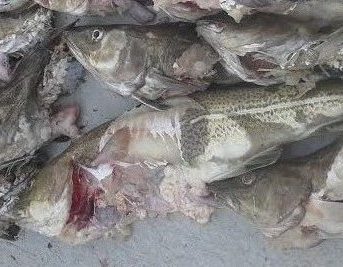
Opinion: If EDF wants to do something about improving cod stocks it needs to address the other factors
The fact is if the Environmental Defense Fund wants to improve cod stock it needs a more holistic approach to cod conservation, taking into account all the factors affecting cod. Not approaching the situation in this manner is just plain wrong. There are a number of other factors that the EDF needs to address if they want to bring back cod stocks. The first is the gigantic seal population that has a dramatic impact on fish populations, including cod. EDF needs to confront the marine mammal conservation community if it wants to conserve cod. more, by Fisherman Theodore Ligenza >click to read< 07:51
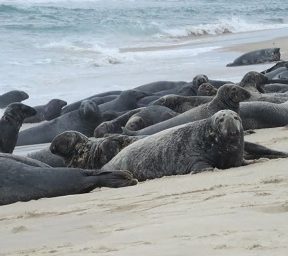
No Action! Seal problem still not being dealt with
Here we go again DFO sciences saying the cod stocks are still declining and they blamed everything under the sun for the reason of the decline except the real reason which are the seals. The seals are not only putting the cod stocks in danger but also the Atlantic salmon stocks, the crab stocks and the saltwater trout stocks etc. Neil Smith, >click to read< 17:44
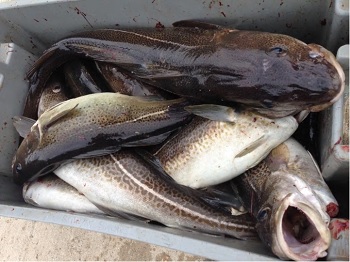
DFO says south coast cod numbers down – ‘This new assessment model is overly pessimistic,’ Atlantic Groundfish Council
Cod stocks are at critical levels off the south coast of Newfoundland and Labrador, according to the new model used by the Department of Fisheries and Ocean,, Even if there was no fishing permitted in the area this coming season, the stock is predicted to decline further. DFO says the natural mortality of the fish caused by predators and changes to the environment is around three times that of fishing mortality.,, But at least two organizations are slamming the new way DFO compiles its data. >click to read< 18:54
Cod stock in Area 3Ps off southern Newfoundland in ‘critical zone’ until at least 2022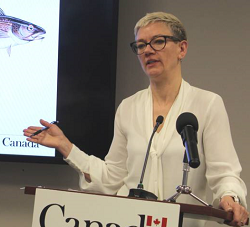 – New model used to determine cod biomass questioned by industry, union. There are fewer cod in the 3Ps area off southern Newfoundland than ever recorded, according to new data released Wednesday by the Department of Fisheries and Oceans (DFO). >click to read< 21:45
– New model used to determine cod biomass questioned by industry, union. There are fewer cod in the 3Ps area off southern Newfoundland than ever recorded, according to new data released Wednesday by the Department of Fisheries and Oceans (DFO). >click to read< 21:45
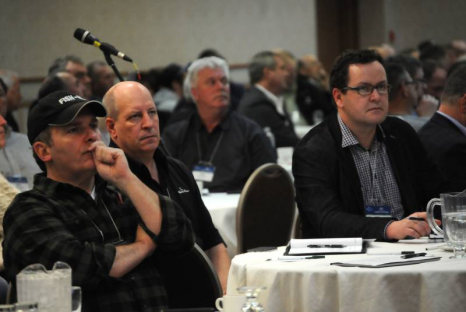
Newfoundland and Labrador cod stocks rebounding, but still critical
Cod stocks off Newfoundland and Labrador have shown “tremendous progress” in recovery over the past several years, but the species is still in critical shape. That’s what delegates at a cod conference in Gander heard Tuesday, Nov. 28. The conference, titled “Cod: Building the Future of the Fishery” and organized by the Canadian Centre for Fisheries Innovation (CCFI), provided updated figures from the 2016 cod stock assessment. click here to read the story 12:31
Dick Grachek responds to “Cod stocks on south coast of Newfoundland ‘OK but not great’
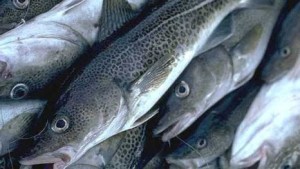 From the above linked article posted on Fishery Nation.com: “The spawning stock is now between the ages for four and seven years, which [lead researcher Rick] Rideout called a ‘pretty restricted’ age.” Click here to read the article “Basically, fish are not surviving to those older ages, they’re coming into the stock … but they’re not surviving to older age, and again, that’s a big concern.” Then abandon MSY management! A majority of younger fish comprising the spawning stock is a function of Maximum Sustainable Yield management (MSY). This MSY management balances the numbers of larger spawning fish taken out of a stock against the numbers of individuals of smaller younger fish entering the stock or “recruitment”—guess what, this yields a highly unstable stock of smaller younger fish. Read the rest here 19:47
From the above linked article posted on Fishery Nation.com: “The spawning stock is now between the ages for four and seven years, which [lead researcher Rick] Rideout called a ‘pretty restricted’ age.” Click here to read the article “Basically, fish are not surviving to those older ages, they’re coming into the stock … but they’re not surviving to older age, and again, that’s a big concern.” Then abandon MSY management! A majority of younger fish comprising the spawning stock is a function of Maximum Sustainable Yield management (MSY). This MSY management balances the numbers of larger spawning fish taken out of a stock against the numbers of individuals of smaller younger fish entering the stock or “recruitment”—guess what, this yields a highly unstable stock of smaller younger fish. Read the rest here 19:47
Cod stocks on south coast of Newfoundland ‘OK but not great’, says researcher
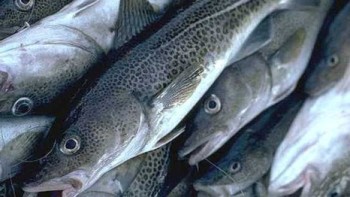 A new study into the state of cod stocks off the south coast of Newfoundland and Labrador shows a decline and high mortality rates. Lead researcher, Rick Rideout, says while stocks aren’t in terrible shape, there is reason for concern. “3PS cod is currently what we would call in the cautious zone … it’s certainly below the target of where fisheries management would like the stock to be,” said Rideout. “We’re okay, but we’re not great.” “Our estimates of mortality are really high right now, as high as we’ve seen in monitoring this stock,” Read the rest here 10:24
A new study into the state of cod stocks off the south coast of Newfoundland and Labrador shows a decline and high mortality rates. Lead researcher, Rick Rideout, says while stocks aren’t in terrible shape, there is reason for concern. “3PS cod is currently what we would call in the cautious zone … it’s certainly below the target of where fisheries management would like the stock to be,” said Rideout. “We’re okay, but we’re not great.” “Our estimates of mortality are really high right now, as high as we’ve seen in monitoring this stock,” Read the rest here 10:24
WEEKEND FOCUS: Warming waters and the Gulf of Maine’s fate
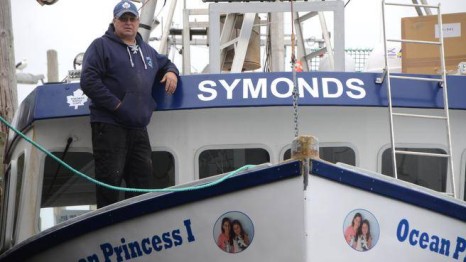 Headlines around that great body of water, cradled inside of Cape Sable Island to the north and Cape Cod in the south, screamed alarm this fall about a pending ecosystem collapse brought on by climate change. Most of those headlines linked back to a study by Andrew Pershing, chief scientific officer at the Gulf of Maine Research Institute, published in October in the journal Science. In it, Pershing attributes the non-recovery of cod stocks to the Gulf of Maine having warmed faster between 2004 and 2014 than 99 per cent of all other saltwater bodies on Earth. Read the rest here 09:38
Headlines around that great body of water, cradled inside of Cape Sable Island to the north and Cape Cod in the south, screamed alarm this fall about a pending ecosystem collapse brought on by climate change. Most of those headlines linked back to a study by Andrew Pershing, chief scientific officer at the Gulf of Maine Research Institute, published in October in the journal Science. In it, Pershing attributes the non-recovery of cod stocks to the Gulf of Maine having warmed faster between 2004 and 2014 than 99 per cent of all other saltwater bodies on Earth. Read the rest here 09:38
Scientists say Newfoundland’s cod stocks are coming back. Can we get it right this time?
 Sometimes, it seems as if cod is all anyone talks about, inside the Cupids Legacy Centre and on the streets of St. John’s, where cab drivers and tattooed twentysomethings still talk about family fishing rights. So when scientists announce the cod is coming back, it’s big news. It rubs salt into old wounds throughout Atlantic Canada. And it raises questions: Can we get it right this time? If the moratorium is lifted, can we find a way to manage the fishery sustainably? Read the rest here 17:34
Sometimes, it seems as if cod is all anyone talks about, inside the Cupids Legacy Centre and on the streets of St. John’s, where cab drivers and tattooed twentysomethings still talk about family fishing rights. So when scientists announce the cod is coming back, it’s big news. It rubs salt into old wounds throughout Atlantic Canada. And it raises questions: Can we get it right this time? If the moratorium is lifted, can we find a way to manage the fishery sustainably? Read the rest here 17:34
Oh Canada! One department says cod is endangered while another recommends more be caught
 Fish harvesters and DFO representatives met in Clarenville on Tuesday for a groundfish advisory committee meeting; a chance for fisheries scientists to give their findings and hear from fish harvesters about the state of the resource. The scientists told the 25 to 30 assembled fish harvesters that the Atlantic cod population in 3Ps, an area that includes Placentia Bay, is growing and they’ll recommend the department raise the total allowable catch (TAC) by 15 per cent. Their recommendations come shortly after a report by the Committee on the Status of Endangered Wildlife in Canada (COESWIC) recommending Atlantic cod be placed on a list of endangered species. more@nlnewsnow 19:39
Fish harvesters and DFO representatives met in Clarenville on Tuesday for a groundfish advisory committee meeting; a chance for fisheries scientists to give their findings and hear from fish harvesters about the state of the resource. The scientists told the 25 to 30 assembled fish harvesters that the Atlantic cod population in 3Ps, an area that includes Placentia Bay, is growing and they’ll recommend the department raise the total allowable catch (TAC) by 15 per cent. Their recommendations come shortly after a report by the Committee on the Status of Endangered Wildlife in Canada (COESWIC) recommending Atlantic cod be placed on a list of endangered species. more@nlnewsnow 19:39
Two variations so far – “Canada’s cod, and many other depleted fish, unlikely to recover” and “Study offers bleak outlook for fish recovery”
By Margaret Munro, Postmedia News – Canada’s once bountiful cod stocks are not likely to bounce back, according to an international study on the dangers of overfishing. “Here we are more than 20 years after the cod was effectively depleted, and according to our analysis, the recovery of the cod stocks is highly improbable,” says fisheries scientist Jeffrey Hutchings at Dalhousie University, co-author of the study published in the journal Science on Thursday….at the end of the article: “Ecosystems change,” says Hutchings, noting how seals, herring and mackerel now fill some of the gaps left by Canada’s cod collapse. (which part does he not understand?) contined
Aly Thomson, The Canadian Press HALIFAX – The recovery of overexploited fish populations such as cod has been slower than expected and many depleted stocks may never be able to bounce back, a new study says. continued
It would be great if our Canadian friends would leave comments about this. BH
1 comment
How about some common sense Dr. Hutchings? New data from DFO suggests seals eat twice as many cod.
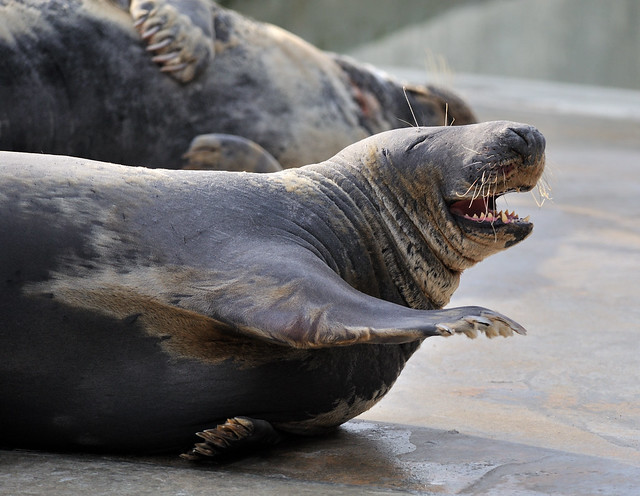 INGONISH — No one is sure yet whether grey seals are continuing to threaten recovery of the cod stocks in the southern Gulf of St. Lawrence, but the seals are there and the fish are not. And new data strongly suggests seals aren’t helping the cod. Seals, eating the softer belly meat and leaving the heads, could be consuming much more cod than figures indicate. Previous data suggested a male grey seal’s diet was up to 24 per cent adult cod. Hamill’s new data suggests adult cod could be up to 60 per cent of the male grey seal’s winter diet. That’s more than double the number that was available to the Senate committee when it recommended a cull. continued
INGONISH — No one is sure yet whether grey seals are continuing to threaten recovery of the cod stocks in the southern Gulf of St. Lawrence, but the seals are there and the fish are not. And new data strongly suggests seals aren’t helping the cod. Seals, eating the softer belly meat and leaving the heads, could be consuming much more cod than figures indicate. Previous data suggested a male grey seal’s diet was up to 24 per cent adult cod. Hamill’s new data suggests adult cod could be up to 60 per cent of the male grey seal’s winter diet. That’s more than double the number that was available to the Senate committee when it recommended a cull. continued

































